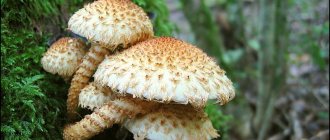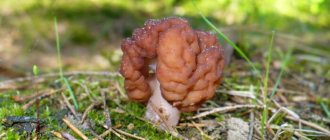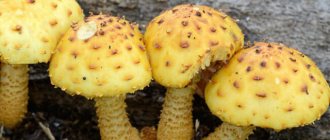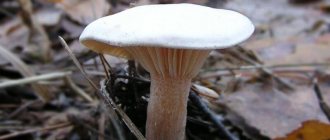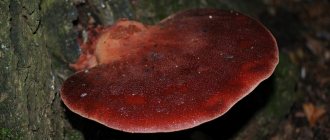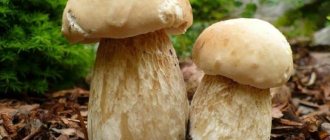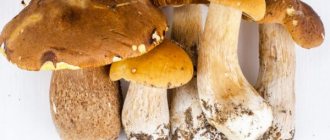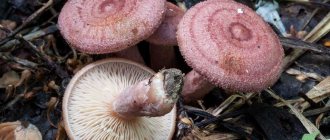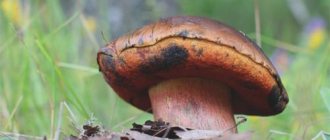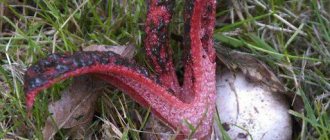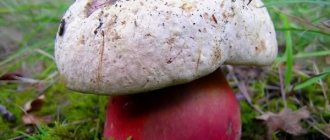When going into the forest to pick mushrooms, a person must be well prepared. He must know which varieties can be eaten. Otherwise, the mushroom picker risks his life. In our climatic latitudes, many edible and inedible, very poisonous varieties grow.
One of the mushrooms that can be found in the forests of our country is the common flake. This is an interesting plant that is not familiar to all residents of Russia. What this mushroom is will be discussed further.
general description
Common scale (from the Latin pholiota squarrosa) is a fairly common mushroom in almost any forest. It grows in large groups. Many people, when going into the forest, collect only those varieties that they know for sure. This is the correct position. In this case, it becomes almost impossible to bring home a poisonous specimen.
However, many lovers of this type of recreation have encountered such an unpleasant phenomenon as the lack of mushrooms in the area close to a private home. The fact is that the collection can be carried out by many people. Therefore, in some cases, the mushroom picker returns home with an empty basket. To prevent this from happening, you need to broaden your horizons.
If you know which previously unknown mushrooms can be collected in the forest, the chances of coming home with a full basket increase significantly. It is precisely these varieties that include flakes. There are many varieties of this mushroom. Almost all of them belong to the edible category. This class has no poisonous counterparts. Therefore, you can not be afraid to collect them almost everywhere.
How to distinguish royal honey mushrooms from false mushrooms (with photo)
Royal honey mushrooms are often called willow trees, since it is on willows that they are collected. These mushrooms grow almost from mid-summer until frost. Inexperienced mushroom pickers may confuse an edible mushroom with an inedible moth. How to distinguish royal honey mushrooms from false inedible mushrooms? False honey fungus moth grows only on ashes, as well as old fire pits overgrown with grass and bushes. It has a bright color, bitter taste and unpleasant odor. Although the pulp is juicy and dense, it is not eaten because of the smell. The fungus can pose a serious danger to human health. Therefore, we suggest comparing photos of the royal honey fungus and the false one:
There are several more royal species of honey mushrooms, which are considered conditionally edible.
For example, the mucous scale, which is very similar to the golden royal scale. The caps of young mushrooms are bell-shaped, which becomes concave as the mushrooms grow, and the edges of the cap rise. If the weather is rainy, then the flesh becomes slimy and sticky, which is where the flake gets its name - slimy. The stem of this mushroom becomes hollow over time, and the ring on the stem completely disappears. Slimy scales grow only on rotted wood from mid-August to early October.
Another false royal honey fungus, the cinder flake, is considered inedible. The shape of the cap at a young age of the mushroom is hemispherical, and when mature it becomes completely prostrate. The color of the cap is very bright - orange-brown, the edges are covered with scraps of the bedspread. The stalk of the scale, especially its lower part, is densely covered with brown fibers. The ring characteristic of real honey mushrooms is not visible at all on the stem.
Common flakes, which are similar to royal mushrooms, are considered conditionally edible. Although it has healing properties, it still has one drawback - it is hallucinogenic. You can eat it, but only after long heat treatment. You need to boil this type for at least 40 minutes and only then eat it. This type of mushroom is collected very rarely, usually only by those who know how to cook it. After all, experienced mushroom pickers know that consuming common flakes with alcohol is strictly prohibited. The opium contained in this form, in interaction with alcohol, can have unpredictable consequences for the body. To know how to distinguish royal honey mushrooms, we suggest looking at photos showing these differences:
Having become familiar with them well, you can safely go into the forest for royal honey mushrooms. However, if you are still not confident in your knowledge, it is better not to take risks, but to collect only those fruiting bodies that are familiar to you.
Share this article:
Appearance of the cap
The common scaly mushroom belongs to the strophariaceae family (class Agaricomycetes). There are many varieties of it. The most common type of flake in our area is fleecy or ordinary. This mushroom is also called dry, scaly. It has a number of characteristic features.
The hat is yellow in color. Its size is 5-15 cm. The shape of the cap is convex. There is a tubercle in its center. There is a small amount of blanket left around the edge. The surface is dry to the touch. It is covered with concentric scales that are yellow-brown in color.
The plates under the cap are tightly located relative to each other. They are rooted. The color of the plates changes over time from light gray to brownish-red. The spores of this mushroom are brown.
The cap has a pleasant taste when cooked correctly. By its characteristic external features, one can distinguish this type of flake from other similar mushrooms.
Varieties
Royal honey mushrooms appear on the trunks of a variety of trees at the end of summer. Many varieties of these mushrooms choose to grow in both coniferous and deciduous forests.
fleecy
For example, the fleecy or common scalyfoot prefers to settle in large families on the stumps of pine and spruce trees. This prickly mushroom has a thin stalk and a round or conical cap. The diameter of the cap of a young mushroom reaches 8, and a more mature one – 15 cm. It is all covered with brown scales of different sizes. The color of the cap varies from yellow to brownish. The color of the leg matches the color of the cap. Above the blanket, the leg, whose diameter is only 1-3 cm, is also covered with scales.
Scaly (common)
The scaly plant is distinguished by a large number of useful properties and is considered to be healing. However, another of its properties is hallucinogenicity. However, it is an edible mushroom that can be eaten after prolonged boiling and other heat treatment. Those who decide to cook and eat common flake are well aware of the ban on eating it in combination with alcohol. One of the components contained in its composition is an analogue of opium, and the consequences of its interaction with alcohol-containing drinks can be unpredictable.
Edible
Edible flake has many fans who know how to cook it correctly and are good at doing it. In addition, dried mushrooms are crushed, and the resulting powder is used as a base for preparing medicinal tinctures. After the mushrooms have been boiled in salted water for 30-40 minutes, they can be:
- use as a filling for pies and pies;
- fry;
- stew;
- cook soups and stews with them;
- make mushroom hodgepodge and caviar.
The main taste qualities of royal honey mushrooms are hidden in the caps, since the legs become dry and hard after heat treatment. Therefore, it is the caps that are used for salting and marinating, preparing them in the same way as valui mushrooms.
Poplar
Poplar scale is one of the destructive fungi. It grows on drying trees or stumps. Its white or brown cap is completely covered with large white or gray scales resembling petals. These scales tend to disappear after the mushroom is fully ripe. The stalk of this species is larger and denser than that of other scales. The pulp is white, juicy. This mushroom is not edible, although by the time it ripens, its bitter taste changes and becomes sweet.
Fiery
The fiery scale attracts the attention of participants in a quiet hunt with its bright color. It was named so precisely because of the bright orange color of the cap, like a light shining among the fallen leaves.
The peculiarity of the fire flake is that it does not grow in a large family, but in single mushrooms. Although the flesh of this mushroom is dense and juicy, it is not eaten because of the strong and rather unpleasant odor that it emits when cut.
Golden
Golden flake is as common as ordinary flake. Its large spherical cap has a glossy bright yellow surface with sparse brown scales. It can be found on an alder trunk or birch stump in damp, swampy areas. This species is directly related to edibles. However, before you start preparing the main dish, the golden flakes should be boiled for 25-30 minutes.
Poisonous species
When collecting mushrooms in the autumn forest, you need to pay great attention to their appearance so as not to take a poisonous one instead of a tasty edible one. False scale is exactly that and poses a rather serious danger to humans.
Description of the mushroom
When going to the forest to pick mushrooms, you must definitely consider the description of the common flake. It is distinguished (in addition to the characteristics listed above) by a large, high leg. It is yellow in color and cylindrical in shape. The height of the leg reaches 16 cm. The diameter can be about 1.8-2 cm.
The leg also has dark scales on the surface. At the base it has a dark brown color. On it you can see a somewhat saggy fibrous ring. The leg, which is located above it, has a light shade of the surface, and below it has a dark shade. It may be hollow inside.
The flesh of the mushroom is quite tough. It has a light yellow color. The smell is faint and quite difficult to determine. It reminds me a little of the aroma of radish. The taste of the pulp is also not pronounced. The taste of this variety may differ significantly from other types of flakes.
What does cinder flake look like?
The cinder flake got its name because of the scaly surface of the fruiting body. It belongs to the plastic mushrooms. The plates are located at a short distance from each other, fused with the stalk, and contain spores. In young specimens, the plates are gray in color, but as the spores grow and mature, the shade changes to clay-brown.
The photo below shows cinder flake in a mature state, when the color of the plates has already acquired a brown tint.
Description of the cap
The cap of a young coal-loving flake has the shape of a hemisphere; during growth it opens. The diameter ranges from 2 to 6 cm, the color is heterogeneous, brown with an orange tint, the color becomes lighter closer to the edges. The surface of the cap is sticky with a sheen and radial, fibrous scales of small size. Due to high humidity in damp and rainy weather, the skin of the cap becomes slippery as it becomes covered with mucus; in the heat it is sticky and shiny. The edges are wavy, and in the center of the cap there is a wide truncated tubercle. The pulp is quite dense, light yellow or light brown in color at the break.
Description of the leg
The leg is long, can reach a height of up to 60 mm and a diameter of up to 10 mm. The lower part is covered with brown fibers, and the top has a lighter color, identical to the cap. The leg itself has small scales that range in color from reddish to brown. The ring area is highlighted in brown, but it fades quickly, so the mark is almost invisible.
Spreading
Many mushroom pickers are interested in the question of where common flake grows. It likes to grow in temperate climates, in humid environments. In our country it can be found almost everywhere.
The presented mushroom grows in North America, Western Europe, Karelia, and the Far East. It prefers the climate of the temperate continental zone. It can often be found on dead tree trunks. Most often it is found in deciduous and coniferous forests on the roots. Also, mushrooms of this type grow on stumps or in hollows.
They feel best in quiet, remote places. This could be a dimly lit forest or areas of forest with dense vegetation. In rare cases, mushrooms of this species can be found in illuminated places. They love shade. Therefore, in such places you should look for the presented species.
Under favorable weather conditions (in rainy weather), this type of mushroom can also be found on illuminated lawns. They most often spread abundantly over dead or rotting wood.
Time, place of fruiting, as well as measures to protect the fungus in nature
Mustard plasters begin to grow in mid-July. They bear fruit from August to September. In unfavorable years there are few of them.
The plant is quite rare and its habitat is difficult to find. Scales appear in nettles, small shrubs, in grass in pastures, in city parks, in woodlands, and on paths at the edge of a meadow. Among the grass in mixed forests, where trees grow densely, it is less common. They feel comfortable in abandoned fields. In the case where the soil and place are suitable for growth and there is enough area for the mycelium, they bear fruit annually.
Distributed in Asia, Western and Eastern Europe, North America, Russia, the Far East and the Caucasus.
Nature reserves observe a regime for the protection of rare mushrooms. Aureum Cystoderma is listed in the Red Book of Russian Regions.
How to distinguish false doubles of an inedible mushroom
If you have even a little experience, then it is impossible to confuse Theolepiot. But those with a developed imagination are able to see something different in Togaria aurea.
Similar types:
- Junonius gymnopilus is a spider fungus. Clusters in the trees. Similar in shade and general appearance, but does not have a “cover” on the leg ending in a skirt, and “powder”. Taxonomists have confused them for a long time. They were called Gymnopilus spectabilis, squeezed into varieties or declared synonyms. In fact, there are different types.
- Fallax cystoderma – common. Similar in color scheme and powder. The twins grow on pine needles, rotten stumps and in moss.
Features of growth
The scale often bears fruit abundantly from July to September. Under comfortable climate conditions, there are cases when the mushroom began to be collected in May. In color and appearance, honey mushrooms and common scaly mushrooms are vaguely similar. Some mushroom pickers confuse them. In the autumn, honey mushrooms become scaly-like.
The difference between these two mushrooms is manifested in the absence of scales in honey mushrooms. Also, their flesh is not hard. This property of the mushroom must be paid attention to when collecting. Also, flakes do not have poisonous imitators. There is no need to fear that a mushroom brought in a basket that matches its description will be poisonous.
Scale is a parasitic fungus. It penetrates with its roots under the bark, drawing out vital juices from the plant. Over time, the tree begins to gradually die. As the mycelium develops, it cuts more and more into the trunk. Most often, the scale selects for growth weak trees that are unable to resist its destructive effects. It is in such places that you can collect a large number of mushrooms. Since this type of scale grows abundantly on the selected tree or stump, collecting it will not be difficult.
Use in cooking
In the list of edible and inedible mushrooms, flakes take the place of conditionally edible ones, which means their culinary use after preliminary boiling (at least ½ hour). In terms of nutritional value, foliot pulp is classified in the fourth category. The flake has a mediocre taste, but can be prepared according to the usual recipes for mushrooms.
Culinary uses of foliot:
- For soups, main courses, sauces, and fillings in baked goods, the caps of adult flakes or whole young, round mushrooms are collected.
- The entire fruit body, excluding the hollow stems, is suitable for pickling and marinades.
- If the pulp is bitter, it is recommended to soak it overnight, boil it, and then marinate it with spices.
Advice! The flakes should not be dried or frozen. This genus of mushrooms is edible and safe only after heat treatment.
Fresh mushrooms are boiled, the first water is drained, and then canned, fried or added to soups. For flakes, any recipes for honey mushroom dishes are applicable. After cooking, the pulp acquires a beautiful bronze color and an almost transparent consistency of dense marmalade.
Taste qualities
Many mushroom pickers are interested in the question of how to prepare and how to clean common flakes. After all, this mushroom has a specific taste. It is classified as a conditionally edible mushroom. According to its taste characteristics, the flake receives the 4th category.
Some mushroom pickers believe that the presented mushroom should not be eaten. However, this is not the case. It is important to process and assemble it correctly. Only the caps of old mushrooms are eaten. If the specimen is young, its cap has not yet opened, you can cut it off along with the stem. Thanks to the abundant growth of mushrooms in one area of the tree, many caps can be collected in a short time. This is one of the advantages of the presented variety of flakes.
The pulp is quite tough. It has a bitter taste. To get rid of it, you will need to boil the flakes for about 25 minutes. After this, it can be used to make pies and pickles. It is fried, cooked in soups, etc. This mushroom is especially tasty in a marinade with spices.
Growing flakes at home
Of all the types of scales, the nameko honey fungus, also known as edible scale, or mucous scale, is the most cultivable. This mushroom is very popular in Asian cooking, especially loved by the Japanese and Chinese, who grow nameko on an industrial scale.
By the way, edible flakes can also be found in our retail chain. Jars of canned mushrooms on the shelves of our supermarkets are very often filled with Nameko honey mushrooms. However, due to the fact that this mushroom is very new to the domestic buyer, marketers prefer not to indicate the name of the canned mushroom, so as not to confuse the timid domestic consumer.
Substrates made from waste from the wood processing industry, as well as some types of agricultural production, are excellent for growing mucous flakes. In other words, the nutrient medium for the development of mycelium and the appearance of fruiting bodies is sawdust (primarily deciduous trees) or chopped straw, to which sunflower husks, wheat bran, chopped corn cobs, etc. are added.
The resulting substrate is sterilized by keeping it at a temperature of about 100°C for 5 hours. For convenience and reliability, it is recommended to form small blocks from the substrate in advance, sterilizing them in this form, and not as a total mass. Then the substrate must be moistened, bringing the humidity to 65-70%.
Mycelium can be purchased either at a gardening store or online. The planting rate is 5% by weight of the substrate. In this case, the mycelium must be planted under sterile conditions and at a temperature not exceeding 30°C.
After this, the substrate is placed in a room (or incubation chamber) with a temperature of about 27°C for 2-3 weeks. At this stage, the flakes do not require lighting, but the air humidity must be maintained at about 80%.
After the specified period, the substrate overgrown with mycelium is transferred to another room, where the air temperature is about 11 ° C and the humidity is at least 98%. At the same time, the substrate needs normal air exchange, so it is no longer possible to keep it in tight bags.
As soon as the first rudiments of fruiting bodies appear on the substrate, their growth should be stimulated by increasing the air temperature by an average of 5°C. You can also reduce the humidity a little - literally by 5-10%. At this stage, you need to provide good lighting for at least 10-12 hours a day.
Having maintained the technology, you can collect mushrooms with a total weight of up to 30% of the weight of the original substrate.
There is an alternative method that imitates the natural conditions in which the scaly mushroom grows. We are talking about solid wood. A stump or a block of deciduous wood is suitable for these purposes. It is best to use aspen, poplar, willow, or birch. Some fruit trees also perform well, for example, walnut, apple, and plum.
The mycelium must be placed in pre-made cuts in the wood. It is recommended to make simple holes using a drill, placing them at a distance of at least 15 cm from each other. The depth of the cuts should be about 4 cm and the diameter no more than 3 cm.
Some amateur mushroom pickers also practice a very unusual method - they split the log lengthwise, pour a thin layer of mycelium into the split, and then, putting the halves together, twist them tightly with wire.
Golden scale
The common edible scale has several similar relatives. They have a number of characteristic features and differences. One of these species is golden flake. It is the same size as the mushroom in question. The color of the cap is different. In golden flake, it has a bright yellow or even orange tint. The flesh is lighter than the surface of the cap. It has a white or slightly yellowish tint.
In damp weather, the surface of the mushroom becomes sticky. The leg also has a characteristic red or rusty tint. The taste of the presented mushroom is higher than that of the common flake. It begins to grow in mid-August. This is a later mushroom.
The smell and taste of golden flakes is reminiscent of bitter almonds. This variety is often used when preparing main courses. Only the caps are eaten. They are boiled for 15 minutes. This removes the bitterness.
How to collect correctly
There are no false flakes that are hazardous to health and can be confused with them when collected. The characteristic roughness, easily detectable in most species, always distinguishes mushrooms from poisonous "imitation" mushrooms. Another feature that distinguishes flakes is its bright colors with an admixture of ocher.
Mushrooms are collected according to general rules: carefully cut with a knife, leaving the mycelium in place. After a few weeks, the flakes can be collected again in the same place. Most often, mushrooms appear in mid-summer; sometimes the first foliot families are found in May. The collection continues until late autumn; the mushrooms can withstand even slight frosts.
An unpleasant odor or bitter taste warns that the mushroom is inedible. Toxic types of flakes are distinguished by the broken cap or stem. The pulp changes color when exposed to air, becoming brown. Conditionally edible species are rather pungent in smell and taste; there is no real bitterness in them.
Important! Before consuming flakes in large quantities, it is worth eating a small piece of boiled mushroom to check. After making sure that this species is edible and there is no allergic response from the body for several hours, the product can be introduced into the diet.
Upland scale
The common flake mushroom has many similar species. Almost all of them belong to the edible category. One of the most common species is boron scale. It is distinguished by a smaller cap size, which rarely exceeds 10 cm. Its average size is about 5-7 cm.
The hat has a yellow tint. May also be orange or even brown. Young mushrooms have a hemispherical cap. Over time it becomes flatter. The surface is quite sticky to the touch.
The stem of this mushroom is also smaller in size than that of the ordinary variety. It does not grow more than 9 cm. Its average size is about 7 cm. The shade of the leg is reddish or even rusty. The inside of the stem of this type of flake is necessarily hollow.
This mushroom is most often found in pine forests. It is eaten. You will need to pre-heat the mushroom. It is not dried. In this form, the mushroom is bitter. In terms of taste, this species is inferior to the previous variety.
It is the boron scale that mushroom pickers most often confuse with honey fungus in the summer. These varieties differ in where they grow. Also, the plates under the cap have different colors.
The scale is tough, checkered and destructive
The hard flake or hard vole (Agrocybe dura) has a cap with a diameter of 3–7 cm, at first convex, later spread out.
Sometimes with remnants of the bedspread around the edges, velvety. The color is whitish or yellowish. The plates are adherent to the teeth, cream-colored, then dark or purple-brown. The pulp is dense, odorless, and the taste is slightly bitter.
Leg. Height up to 10 cm, diameter up to 1.5 cm, cylindrical, sometimes thickened towards the base, dense, white or fawn, the remains of the ring are not always noticeable.
Spore powder. Brown.
Habitat. Among the grass and dead wood in forests, gardens, parks.
Season. Spring – early autumn.
Similarity. With flake, or early vole (A. praecox).
Use. Edible, but nutritionally of little value mushroom.
Medicinal properties. Contains the antibiotic agrocybin, which suppresses the action of many pathogens.
Sticky scale (Pholiota lucifera) has a cap with a diameter of 3–6 cm.
At first hemispherical, then cone-shaped or convex-spread, with a drooping smooth edge, lemon-yellow, with rusty-yellow, appressed, elongated, sparse scales, over time almost red, naked. The plates are initially yellow, then reddish-brown, and later brown-spotted. Leg 3–5×0.4–1 cm, cylindrical or narrowed downwards, dense, yellow to the ring, smooth, below – the color of the cap. The pulp is dense, yellow, brownish at the base of the stem, bitter, without much odor.
Reviews from mushroom pickers
The common flake, according to reviews, is not only an edible, but also quite tasty mushroom. It is recommended to pay due attention to its processing in order to remove excess bitterness.
The mushroom is found everywhere. It is easy to assemble. This mushroom has no poisonous counterparts. Therefore, even inexperienced mushroom pickers can collect it without fear.
Having examined the features and characteristics of the common flake, everyone will be able to collect this mushroom in a nearby coniferous or deciduous forest.
Tuberous scale, Pholiota tuberculosa
Hat:
Relatively small (average diameter - 2-4 cm), develops from kidney-shaped to convex, cushion-shaped, with neatly tucked edges, on which light remains of the private bedspread remain for a long time; the caps of mature mushrooms can open completely, retaining only a blunt tubercle in the central part, and then the edges lose their regular outline. The color is yellow-orange, usually darker in the center, the dry surface is densely covered with small felt scales of the same color, pressed to the cap. The cap flesh is thin, yellowish, without much odor and somewhat bitter in taste.
Hymenophore:
The plates, which in young mushrooms are covered with a private veil, are free or narrowly adherent, of medium frequency, interspersed with small plates. The color of the plates is initially light, almost white, and gradually darkens with age to yellow-brown; in mature scales, the plates are often covered with small rusty-brown specks.
Spore powder:
Ocher brown.
Leg:
Relatively short and thin (1.5 - 3.5 cm in length, no more than 0.5 mm in thickness), cylindrical, often curved, densely pubescent at the point of attachment to the substrate. The ring remaining from the private cover quickly disappears, leaving vague strokes and bracelets of a darker color on the surface of the leg. The leg is painted the same color as the cap, in the upper part (above the former ring) it is somewhat lighter, the surface is also covered with velvety scales. The flesh of the leg is hard, fibrous, dark at the base, yellow above.
Spreading:
Tuberous scale is found quite infrequently and sparsely from mid-summer to the end of September, preferring the well-decomposed remains of deciduous trees - birch, linden, aspen and others. Due to the fact that Pholiota tuberculosa is easily confused with small specimens of many other scales, data on the distribution of this fungus in a particular area needs to be clarified.
Similar species:
Serious sources indicate the luminous scale (Pholiota lucifera) as a counterpart to Pholiota tuberculosa, but it differs in its sticky surface and pressed scales. At the amateur level, it is much easier to confuse the tuberculate scale with the fiery scale (Pholiota flammans), but in that case the scales on the cap and stem are very puffy, and it only grows on conifers.
Edibility:
Like many bitter scales, Pholiota tuberculosa is edible for those who like it and know how to cook it. In other cases, it is indicated as a mushroom of low nutritional value, functionally equivalent to inedible.
Author's notes:
For decades now I haven’t been able to dismantle the old rotten shed in the middle of the property; I don’t even know which side to approach it from. I decided to consult mushrooms. Now I purposefully drag mushroom material from the forest. Some Polyporus, Mycenae and Tubaria are already actively helping me with the shed (well, these are of little use), I still haven’t given up on the dream of acclimatizing the killer sawfolium, I’m waiting for oyster mushrooms from year to year. Well, the tuberculate scale grew on its own, without waiting for a special invitation. I believe that another twenty years will pass - and the ugly pile of rotten logs and boards in the middle of the site itself, without human intervention, will be processed into useful and peaceful compost. I believe in the victorious power of the mushroom.
I caught these on a log that rolled out of the wall of an old barn. I wonder what kind of rot they cause - brown or white? And by the way, which one is better?
The lumpy scale cannot be called an exquisite decoration of the forest, but in the darkness and dampness, among the ancient lindens and oaks, every bright spot adds optimism. Others say that locals sometimes collect it together with honey mushrooms, of which there are sometimes whole mountains, and then complain that the current honey mushrooms are bitter.
Characteristics of edible mushrooms similar to honey mushrooms
Naturally, general characteristics alone will not be enough to boldly go in search of such a difficult-to-identify mushroom as honey fungus. The widespread distribution of edible and inedible representatives of this family only complicates the search, which is why, in addition to studying the appearance of the first group, it would not hurt to familiarize yourself with a brief description of the second.
With scales or flakes
Fortunately, not all honey mushroom doubles are deadly, although this does not mean that any dishes should be prepared based on them. An example is a common variety with characteristic scales sticking out in different directions, called the thick-legged honey agaric. This mushroom can easily be confused with the autumn honey mushroom, thanks to its delicate colors and “skirt” on the stem, but there are significant differences.
Among them is the predominant growth on dead wood and other forest litter, including spruce needles, which is almost impossible for ordinary honey mushrooms, as well as a slight thickening in the lower part of the mushroom stem, which has too hard a fibrous structure. It is because of this feature that the variety is classified as conditionally edible, since experienced chefs prefer to use only the cap of the scaly mushroom, using it in all kinds of marinades and pickles.
There is also such a variety as flake. It also looks very much like the autumn honey fungus, although its scales are even larger and more prominent. In addition, the flesh of the mushroom is tougher, which is why it never received wide culinary use, being classified as conditionally edible, and in some sources as inedible, although there are still experimenters who use this variety to prepare savory marinades and soaked appetizers with horseradish, garlic and oak leaves.
